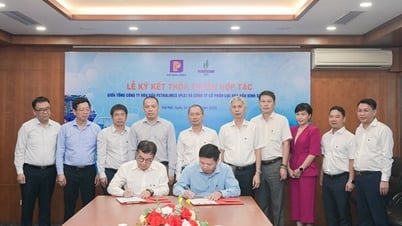
The Ministry of Finance is drafting the Law on Tax Administration.
According to the Ministry of Finance, the development of the Law on Tax Management (amended) aims to promote the modernization and comprehensive digital transformation of tax collection management, applying modern information technology, with connectivity and integration to promote digital transformation in tax management with three main pillars: Facilitating taxpayers; improving the effectiveness and level of tax management; promoting digitalization of tax management processes.
In addition, overcome the shortcomings of the Law on Tax Management; ensure consistency and synchronization with related laws. Promote the reduction of administrative procedures (AP), reduce the cost of implementing AP; enhance coordination between state agencies and organizations and individuals related to tax authorities in sharing data, connecting to implement tax laws and tax management. Promote decentralization and delegation of authority; implement online AP for people, businesses, and organizations regardless of administrative boundaries. Build complete AP in the direction of creating a centralized, single "one-window".
Strengthen strict inspection of tax evasion and tax fraud. Improve compliance with tax laws, voluntarily pay taxes correctly, fully and promptly to the State budget. Complete the legal framework to manage new economic models, technology-based and digital platform-based businesses, tax management for business households and individual businesses after eliminating the form of tax contract, encourage business households to switch to operating under the enterprise model.
The draft Law on Tax Management (amended) consists of 10 chapters and 54 articles. The content of the draft Law is basically arranged and condensed in chapters, articles and the content of the articles to decentralize power to the Government and the Ministry of Finance but still ensures that the contents on tax management are fully regulated in the draft Law (framework regulations).
Taxpayer classification in tax administration
One of the new provisions of the draft Law compared to the 2019 Law on Tax Administration is that the Ministry of Finance proposes to stipulate 01 article on classifying taxpayers in tax administration. Specifically, in Article 3 of the draft Law, the Ministry of Finance proposes: Tax authorities shall classify taxpayers according to criteria of risk management, compliance management and tax administration functions.
Taxpayer classification is used for the following purposes: 1- Assessing tax risks and taxpayers' compliance with tax laws; 2- Applying tax management measures, monitoring tax obligations, and tax management procedures appropriate to each taxpayer classification; tax risk levels and taxpayer compliance history; 3- Determining priority for taxpayers in tax management and allocating management resources.
Criteria for classifying taxpayers: Scale of operation, revenue scale; industry, field of operation; legal form, ownership, characteristics of operation; other criteria as prescribed by the Ministry of Finance.
In addition, the draft also proposes assigning the Ministry of Finance to specify the implementation of this regulation.
Regarding the reason for the above proposal, the Ministry of Finance said: The regulation on taxpayer classification in tax management is to respond to the change in the context of modernization and digital transformation in tax management, aiming to change the manual management method to management based on risk and compliance level. This regulation is the legal basis for tax authorities to focus resources on high-risk groups, while supporting and facilitating groups with good compliance, improving efficiency and encouraging voluntary compliance. Practice shows that taxpayers are very diverse in terms of scale, fields, compliance behavior, and need a classification management mechanism instead of applying a common regime. This model has been effectively applied by many countries such as Australia, the UK, Korea, Canada, Singapore and is recommended by the OECD in the tax compliance management framework. Taxpayer classification can be implemented immediately through the tax industry database, invoice information system, declarations, financial reports, compliance history and information from third parties. The Ministry of Finance will provide detailed guidance on criteria, grouping procedures and implementation monitoring through a centralized information technology and data system.
Please read the full draft and give your comments here.
Wisdom
Source: https://baochinhphu.vn/du-thao-luat-quan-ly-thue-sua-doi-102250826155521673.htm



![[Photo] Images of the State-level preliminary rehearsal of the military parade at Ba Dinh Square](https://vphoto.vietnam.vn/thumb/1200x675/vietnam/resource/IMAGE/2025/8/27/807e4479c81f408ca16b916ba381b667)

![[Photo] Parade blocks pass through Hang Khay-Trang Tien during the preliminary rehearsal](https://vphoto.vietnam.vn/thumb/1200x675/vietnam/resource/IMAGE/2025/8/27/456962fff72d40269327ac1d01426969)



































































































Comment (0)